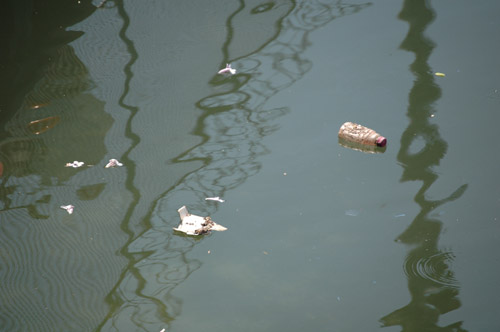Will the Gowanus Drown in Crap from Atlantic Yards?

We often post about the issue of sewage and the Gowanus, which is one of the things that will doom any cleanup effort of the canal if left unaddressed. Unfortunately, there is ample evidence that --claims in the Atlantic Yards Environmental Impact Statement to the contrary--the massive development at Atlantic Avenue and Flatbush Avenue will increase the threat to the Gowanus. How this will all play out with developers that hope to sell million dollar condos in a neighborhood in which a body of water is treated like an open sewer and in which sewage regularly floods the streets is an interesting question. In that context, it's worth reading the new article on Scienceline called Too Big for Its Britches by Meredith Knight. Here's a sample:
The thousands of Atlantic Yards residents will produce millions of gallons of sewage. Oozing from their garbage disposals and toilets it will flow down pipes, slither underground through South Brooklyn and–if it’s raining–deposit itself less than half a mile away in a hundred-year-old waterway called the Gowanus canal. The stagnant channel in the shadow of two large public housing projects–described by some as an “underwater junkyard”–is strewn with car parts, crumbling cement and, sometimes, raw sewage.There's a lot more to the article and it's definitely worth a read.
When there’s heavy rain, sewage from overwhelmed drainage pipes rushes into the canal, flooding nearby homes with bacteria-laden wastewater. Residents have even reported 10-foot geysers of sewage. It’s a foul-smelling symptom of a problem that has long plagued central Brooklyn, where the combined storm water-sewage pipe system built more than a century ago now faces the demands of the hundreds of thousands of people living nearby.
Many of those residents are worried that the massive Atlantic Yards project will worsen the situation, despite the developers’ promise to ease the impact by building water storage tanks and installing low-flush toilets. They say the city is backing down on its commitment to reduce sewage overflows in the neighborhood, and to create runoff-absorbing wetland areas that could serve as buffer zones along the fetid canal, a plan originally developed by the city along with the U.S. Army Corps of Engineers.
“It’s really a matter of too many pipes going to one place and not enough being done by the [New York City] Department of Environmental Protection,” said Michael Ingui, chairman of Gowanus Community Development Corporation, a neighborhood improvement organization.
Labels: Atlantic Yards, Environment, Gowanus Canal

0 Comments:
Post a Comment
<< Home